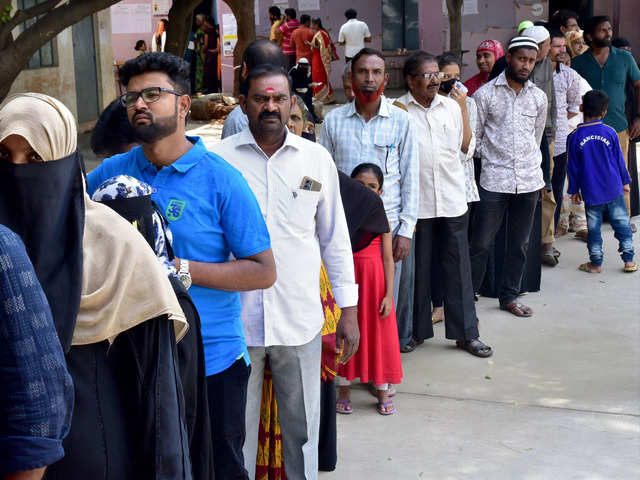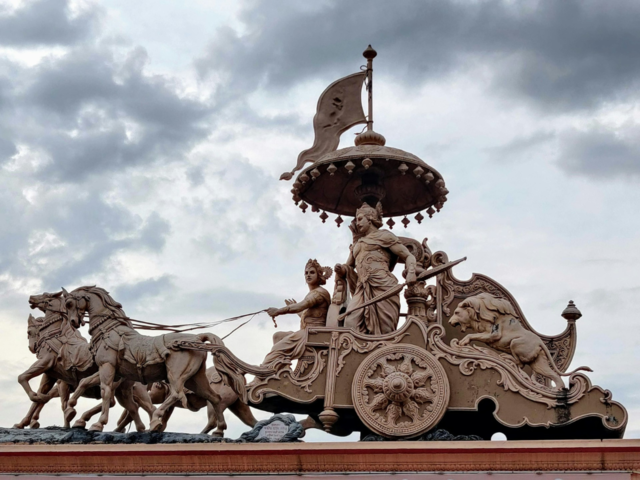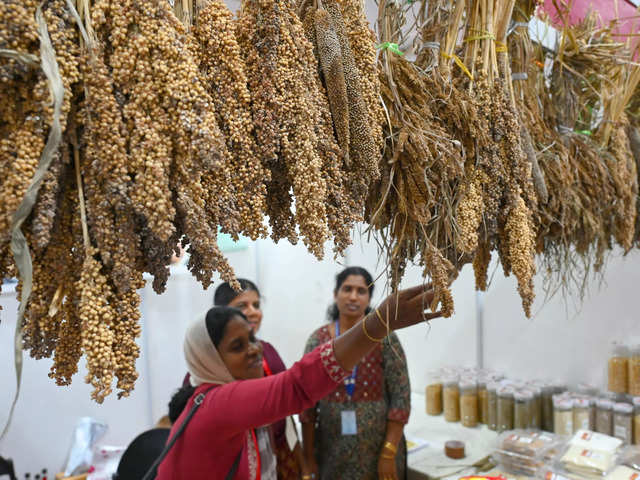
UnSplash
Storyline endeavors to decode what storytelling stands for today and how marketers and advertisers are navigating new m...
Mar 1, 2022, 12:00 IST
brands
Storyline: Decoding the art of storytelling in today's highly dynamic world
Mar 1, 2022, 12:00 IST
Storyline endeavors to decode what storytelling stands for today and how marketers and advertisers are navigating new m...
- Ad & Media Insider’s latest property Storyline, brought to you in association with
Wattpad , one of the world’s most lovedstorytelling platforms, endeavors to decode what storytelling stands for today. - Today, we bring you highlights from our fourth and fifth episodes where we discuss the changing role of
advertising creatives, how brands are choosing to communicate with GenZs innovatively and what role a platform like Wattpad is playing in this innovation. - Watch
Harshad Rajadhyaksha andKainaz Karmakar , Chief Creative Officers,Ogilvy India andDevashish Sharma , Country Head, Wattpad India talk about the evolution of creativity and storytelling and how they are evolving as storytellers to tell successful stories in today's world.
Most of us have loved the work coming out of Ogilvy India in the last few years and the creative powerhouse between most of that work is Harshad Rajadhyaksha and Kainaz Karmakar, the Chief Creative Officers at the agency. The duo, along with Sukesh Nayak, Ogilvy India’s third CCO, have been at the forefront of crafting inimitable stories that have won our hearts while creating an impact.
Be it the recent recreation of Cadbury Dairy Milk’s famous Cricket stadium ad, or its work for Hindustan Unilever titled ‘The Shower’ which won a National Award, Ogilvy has time and again proven the impact good storytelling can have in brand building and in making a brand a part of a consumer’s lives.
In the 4th episode of Ad & Media Insider’s Storyline, brought to you in association with Wattpad, one of the world’s most loved storytelling platforms, we spoke to Karmakar and Rajadhyaksha to understand their creative process and their thoughts on the evolution of storytelling and what the future holds.
The evolution of storytelling
We have seen the
“Storytelling is as timeless as love or friendship, so I don't think it's going out of fashion anytime soon, or even later. But there has been a rapid transformation, especially in the last five years. I would not call it a change, rather, I feel there has been an expansion. Something fantastic has happened, media has become more open and liberalised and our first encounter with this happened back in 2015, when we did a campaign on zero budget to end open acid sale. We worked with like-minded people and with a real acid attack survivor. We shot the film. Had this been 20 years back, we would have had no place to show the film because media needed to be bought. It still needs to be bought but now there is also freedom to put out your own content. We put the film on YouTube and Facebook, promoted it ourselves, and the trajectory of the campaign has been astounding. It has won everything there is to be won, and we could achieve our goals with zero budgets and it was made possible largely by the changing nature of media,” said Karmakar.
But does having a plethora of platforms pose the problem of plenty? Do creatives now have to think of communications suited for individual platforms? “Between Kainaz and I, we have spent around 20-25 years in advertising and we have ourselves evolved from the era of Print to Television. Then somewhere in the second decade, we started getting used to the concept of smartphones and multiple apps and hence multiple screens. But if your story is engaging with the relevant connect, the medium becomes secondary. Technology has put the spotlight on people who could all become storytellers, and brands saw people enjoying this content and slowly realized its power and thought of latching on to it. So, in terms of the number of mediums, I feel the more the merrier because today you just have a width and variety of storytelling,” explained Rajadhyaksha.
From advertisers to product managers to solution finders
With the evolution of media and advancement of technology, many brands are now also open to experimenting where, as a pat of a campaign, they have ended up creating a completely new product. In an attempt to encourage the habit of washing hands with soap among children in rural India, Ogilvy helped Savlon create special chalk sticks infused with soap. In another campaign to promote a similar habit, Ogilvy created a heat stamp to put on roti at the Maha Kumbh Mela for Lifebuoy. The brand’s message-on-a-roti ended up reaching over 5 million people. In both these campaigns, the idea led to the creation of a completely new product. Both these campaigns won awards and hearts.
Is it challenging for agencies to then have clients come up to them and say they want to create a completely new product and take the business to a new trajectory? “It's not a stress at all. What I really love about the times that we work in is that our clients are super excited about doing work that is new and innovative. And that is something we should grab with both hands and make the most. I would be very worried if our clients weren't pushing us. The fact that they want different solutions, to use different media and support us, is a great sign. Recently, one of our teams has come up with a karaoke technique to help people with early Alzheimer's, in collaboration with MTV. So, the fact that clients are asking us to do such work and they are excited about it, is not a pressure but a thing of joy. The truth of the m after is we are actually becoming solution finders above and beyond just communicating a message. People are interacting, touching and feeling things beyond your client’s products, these are products made by you. They're actually getting to experience technologies that have been just ideas in your head and now we’re seeing them out there actually helping someone. It has also brought clients and agencies closer than before. It's a great time to be in the creative business,” said Karmakar.
A message for marketers
With the advent of Web 3.0 and us looking at a world where a metaverse might soon become a reality, things are changing at a rapid pace. What are a few things marketers should keep in mind to be able to navigate these highly dynamic times?
“I feel no matter how much technology you have, or whatever new media comes in, the absence of a great idea means your money is not well spent. In fact, it's money wasted. So, first find yourself a partner who can give you a great idea, and then use your media, technology, etc, as partners to that. Do not work the other way around because everything starts with an idea and that is not going to change,” said Karmakar.
Sharing his tip for marketers, hought, Rajadhyaksha added, “Completely well-meaning clients and brand custodians, at times, have brand guidelines about what the brand’s personality should be. But when it comes to exploring certain new-age things, treat your brand DNA and the personality of your brand like your family name, but treat the new media like the grandkids of the family. While they will bear your family name, allow them to be a little different, to take a few more risks. That's how I would encourage all clients to look at the newer mediums. You might be an 80-year-old legacy brand who advertises and talks in a certain way in your storytelling on TV. We aren’t saying become someone with a completely different personality on the newer mediums, but be a little adventurous and bolder and allow the younger kids in your organization and the agency to deviate a bit. Let them live their lives their way, as long as they still bear your family surname.”
Watch the full episode here:
LIVE | Join Kainaz Karmarkar (@spalifekainaz) and Harshad Rajadhyaksha (@Harsh_Words), CCOs, @Ogilvy_India as they… https://t.co/63l7yYar9K
— Advertising and Media Insider India (@admediainsider) 1645702223000Episode 5: Devashish Sharma, Country Head, Wattpad India
The art of storytelling has changed and new-age mediums like Wattpad are at the heart of this change. To understand the role Wattpad has been playing in this evolution of storytelling, we caught up with Devashish Sharma, Country Head, Wattpad India, who told us how consumers are using the platform, how that is helping brands connect with an engaged set of audience and what the future of storytelling could look like.
From one-way communications to interactivity
The biggest way in which storytelling has transformed in today’s digital era is by opening it up to consumers. In the TV and Radio era, a brand would come up with a one-way communication, which has undergone a complete transformation now.
Explaining this evolution, Sharma said, “About 15-20 years back, a lot of brand building was one-way messaging. Brands would create something and then push it down to millions of Indians, predominantly TV or billboard. However, in the Internet era where the target audience has become younger, the focus of brands have shifted to digital platforms. And recently, it is also about interactive content. Today, brands don't just want to push their messaging, they want the audiences to create their viewpoint about the messaging and have a discussion with the brand about it. In lieu, it creates more awareness in a very interesting and exciting manner.”
Communicating with GenZ
With the younger generation which is difficult to please and said to have reduced attention spans, brands now have the task of finding innovative ways of engaging with them.
Explaining how Wattpad has been building its communication to engage with this audience Sharma said, “If I were to look at it from a Wattpad lens, we are a very democratic platform where anybody can write on a topic they love, and at the same time, consume stories on a specific niche topic that might interest them. However, what differentiates us is the fact that the experience you get on our platform is not just of reading a book, it is also about connecting with other readers, leading to social engagement. Beyond this, the stories that become really popular and are highly engaging are taken on by production houses and top studios to turn into movies, TV shows, web series or other forms of digital entertainment. As a platform, being at the epicenter of ideas directly coming in from Gen Z storytellers allow us to really capture the right stories which we amplify.”
Why long-form content works
While there has been a debate for a long time around decreasing attention spans, Wattpad has been able to make long-form content, and has held its audiences captive with engaging stories on its platform.
So what is it that Wattpad has gotten right? “Personally, I feel that the idea that people have less attention span is a bit of a misnomer. It might be true in certain contexts, but given the right content in the right format, people definitely make time to consume it. If a certain content captures your interest group and the experience of consuming it is something that you really enjoy, people will definitely prefer long- form content because it adds meaning and gives you much more than just snacking on punchlines,” explained Sharma.
There has also been an ongoing debate about whether the younger population reads at all. However, the fact that Wattpad has a community of about 94 million readers and writers on its platform proves that given the right content and right amount of social engagement, people will stay on the platform and consume content, added Sharma. “The entire social element really elevates the user experience because we are able to give our audiences the liberty of connecting with the creator of the content and also other readers who love the same content as you. This bonding evokes a strong emotional response which is something that brands really like because when they work with us, they know that the content they're getting already has a built-in audience that did not just skim through it but actually interacted with it. So, the secret sauce is to have a platform that enriches the experience of consuming content and provides more democracy in terms of capturing diverse voices.”
How brands are using Wattpad
Today, more and more brands are open to experimenting with mediums and formats that is giving them highly innovative ways of engaging with their target audiences.
So how has a platform like Wattpad helped brands create engaging stories and build enduring relationships with their audiences? “At Wattpad, our focus is on figuring out how our community can bring value to brands in the form of stories. And that's the real value that brands get. So, when brands have a brief, they come to us, we work with them to figure out how to engage the community from day one, where we invite all our users on the platform to write their version of stories on the messaging that the brand wants to create awareness on. So, instead one story, you get maybe thousands of stories from all over the world from your target audience that really connects with your brand messaging. Once the stories come, we pick the top stories and promote them for more readership because we realize that readers around the world who may not have written content still want to connect with the brand on the messaging that other users on Wattpad have written. And since we also have a studios division, we are able to adapt these stories into video and other formats that can traverse the messaging of the brand beyond Wattpad into more video-focused channels,” he explained.
Earlier this year, Wattpad worked with Maybelline on a campaign for raising awareness on the impact the pandemic had on the mental health of Gen Zs around the world under the hashtag Brave Together. Wattpad invited everybody to write a short story or a personal experience around the topic and for every story that came in, the platform partnered with an NGO to donate a certain amount to raise awareness around mental health. “A campaign like this made the community feel that the brand cares about its voice and is not pushing its messaging on them. Secondly, the involvement of the nonprofit increased the connection with the brand, making the entire initiative more genuine. And this sort of brand positioning really benefits the brand in the long-term because they are able to create fans instead of just consumers,” he shared.
So are there a few factors that can help brands success on Wattpad? Sharma said, “The key to being successful as a brand on Wattpad is to support a messaging for your brand that Gen Z users really care about. And secondly, be open to their interpretation of the message that you want to create awareness on. For example, we did a campaign with Puma in India where they launched a clothing and shoe line with Mary Kom and the hashtag was Born to Provoke. I really liked the way they used Wattpad. They invited our community members in India to write a story, a personal experience, a song or poetry to celebrate women breaking barriers. We got stories from different parts of the country that spoke about women from different age groups and backgrounds breaking societal norms. This was a very successful campaign and I think I use it as a benchmark because the brand here took a backseat, letting its target audience do all the work, whether its creation or consumption of the content. And a lot of users, on finding a story or song that they resonated with, shared it on their social network. So, the voice of the whole campaign went beyond just Wattpad.”
With a community of more than 94 million people on its platform from across the world, Wattpad is witnessing an increasingly growing community of highly engaged audiences, opening up opportunities for brands to drive their brand messaging to a highly targeted audience.
Watch the full episode here:
LIVE | Join Devashish Sharma (@devunofficial), Country Head, Wattpad in conversation with Ashwin Raghunath as they… https://t.co/zqsgEg6zo0
— Advertising and Media Insider India (@admediainsider) 1646047811000INSIDER INTELLIGENCE REPORTS







